Tibetan Buddhist thangka painting of deities traditionally involves rigorous adherence to traditional design principles, all carefully gridded onto the canvas, to create imagery for meditation.
In Tsherin Sherpa’s version—included in the exhibition “Spirits” at Salem’s Peabody Essex Museum from Feb. 4 to May 29, 2023—the deities become strutting pop divas (one painting is directly inspired by Lady Gaga) and swaggering influencers. Like Sherpa, who was born in Nepal and emigrated to Oakland, California, they seem to have joined the diaspora, leaving their homeland and holy realms for this America of consumerism.
“I actually tried to play with these same icons in a different way. Maybe humanizing them. Mabye making them less iconic,” Sherpa said in a 2019 interview for the Virginia Museum of Fine Arts. “…When you go to a new place, you try to bring your culture, your identity, your background and sometimes it’s very important to preserve this family or cultural tradition that you have been handed down for so many years and try to preserve it in a minute way, whatever you have, and then pass it down to the next generation.”
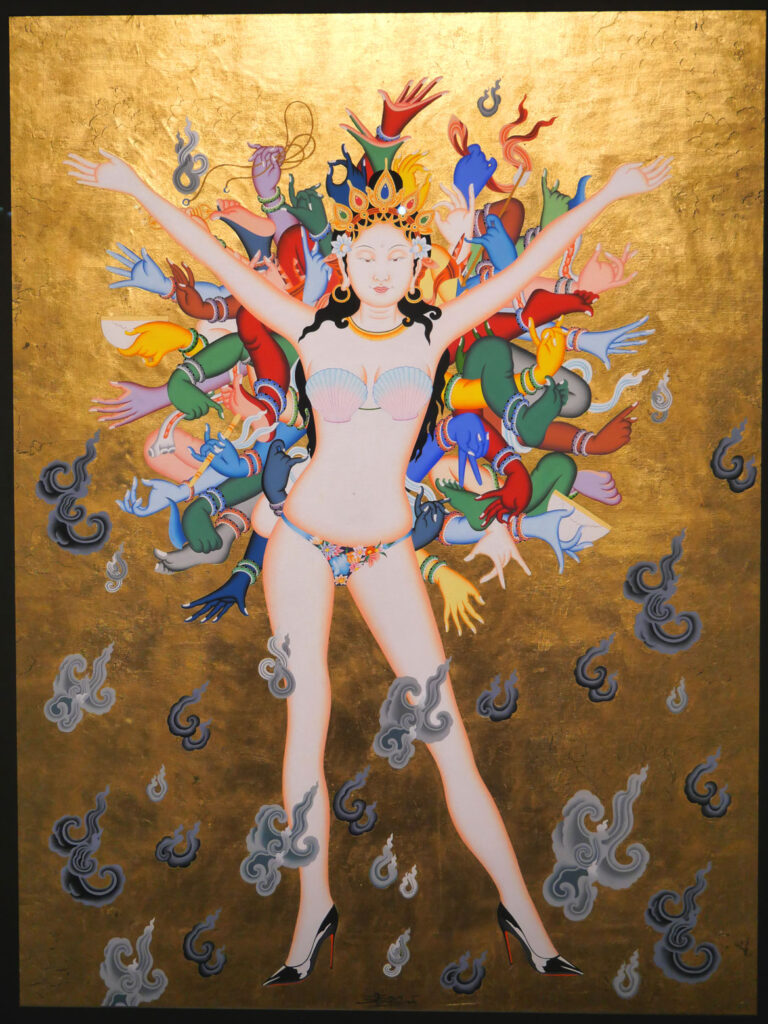
A friend’s young daughter asked Sherpa why there were so few women heroes in Himalayan contemporary art. His response was this figure who fuses the Bodhisattva Tara with modern-day pop musician Lady Gaga, pictured here in one of her most iconic outfits: an ensemble worn at the 2013 MTV Video Music Awards. With her arms out in unabashed confidence and pride, Tara Gaga drives away the ominous dark clouds of smoke with her radiant presence.
Here Sherpa’s precisely painted figures are still surrounded by shimmering gold leaf, but they have halos of emogis and corporate logos, they blow bubble gum bubbles.
The exhibition, which was organized by the Virginia Museum of Fine Arts, in partnership with the Peabody Essex Museum, doesn’t include traditional art by Tibetans as context. But it does feature ink drawings by Robert Beer—studies of varying skulls, flames, flowers, clouds, gesturing hands.
“In 1968, Beer, a self-taught artist from Wales, experienced a major mental and emotional crisis that would last several years,” organizers write. “In search of spiritual meaning, he left for India and Nepal, where he immersed himself in the study of Tibetan Buddhist thangka painting with several of the greatest practitioners living at the time. Beer spent the next 40 years producing hundreds of line drawings of Indo-Tibetan deities and symbols.”
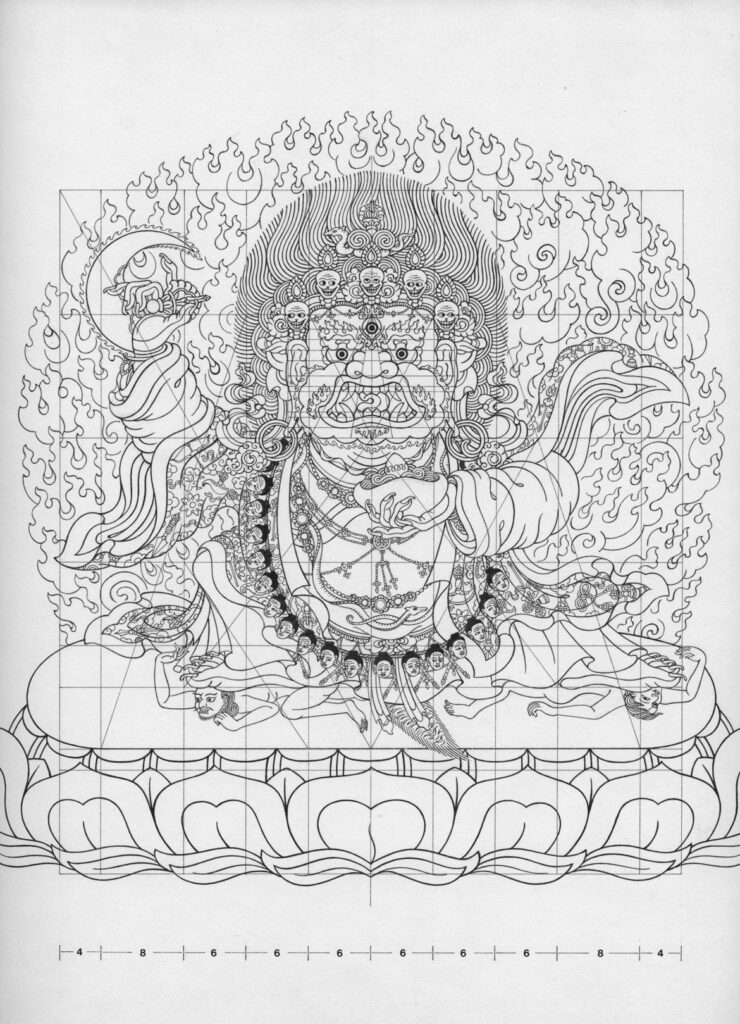
Dorje Bernagchen stands amid blazing fire and smoke, his body writhing like black thunderclouds. He wears a billowing black cloak embroidered with weapons, a crown studded with skulls, jewel and bone ornaments, a serpent necklace, and a garland of 50 severed heads. He gazes at the viewer with three furious eyes. His terrifying appearance is emphasized by his fiery hair and a voracious mouth with gnashing fangs. His left hand lifts a skull-cup to his mouth, filled with blood and a torn-out heart. His right hand wields a crescent-shaped flaying knife.
Sherpa comes from a family of traditional Tibetan artists: “My dad was trained by his uncle.” When he was around age 13, he began training with his father. Inspiration came from stories his grandmother told of protective deities who watch over Tibet and its people.
There’s politics in Sherpa’s paintings, but it tends to be coded. He renders the deity Mahakala with a body made of hundreds of tiny photos of the Tibetan diaspora. “Peace Out” from 2013, shows a figure with its hands up to its ears making what could be read as peace signs. In fact, it evokes the gesture the Dalai Lama, the Tibetan spiritual leader who lives in India in exile from Chinese rule of Tibet, made when South African authorities refused him entry to that country to attend celebrations of the 80th birthday of Archbishop Desmond Tutu. A museum sign explains that the Dalai Lama meant the gesture as horns to indicate that “some Chinese officials portray him as a demon.”
If this is the kind of coverage of arts, cultures and activisms you appreciate, please support Wonderland by contributing to Wonderland on Patreon. And sign up for our free, occasional newsletter so that you don’t miss any of our reporting. (All content ©Greg Cook 2023 or the respective creators.)

This Spirit’s hand gestures are more than just peace signs as the title of the painting might lead us to believe. They allude to a famous gesture made by the 14th Dalai Lama after South African authorities prevented him from attending Archbishop Desmond Tutu’s 80th birthday celebrations. During a video call after the event, both religious leaders denounced the actions of the foreign ministry officials. The Dalai Lama raised his fingers like devil horns and claimed that some Chinese officials portray him as a demon.
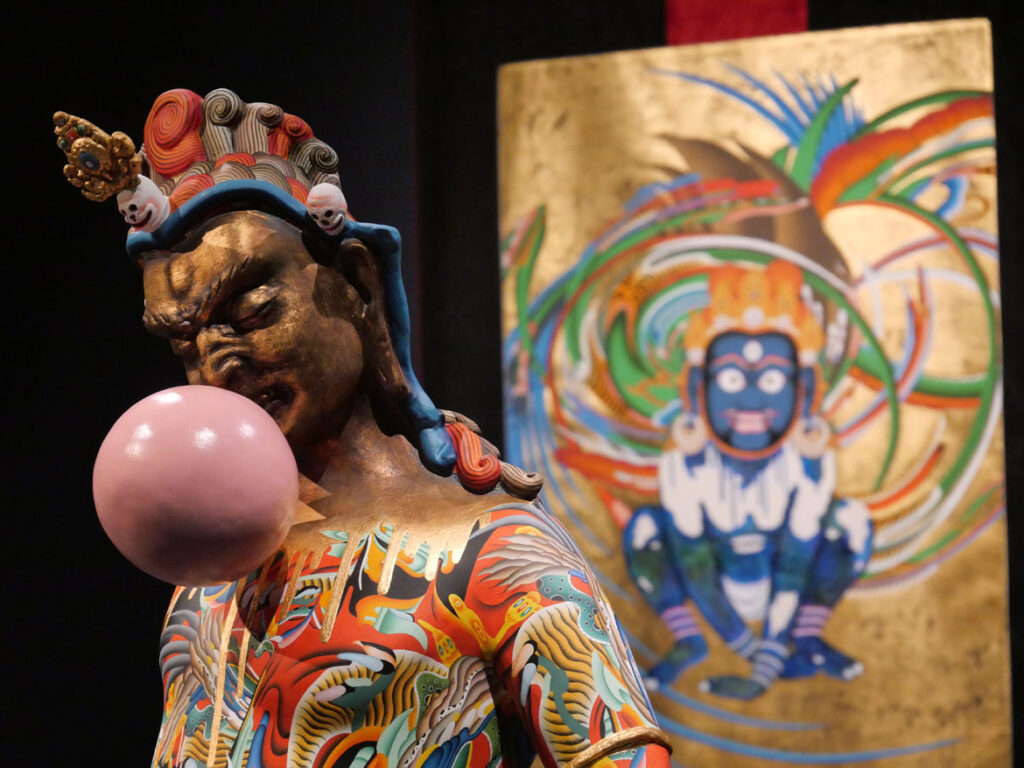
Sherpa titled this work after a family of butterflies known for their quick, darting movements. These colorful insects are a recurring motif in Sherpa’s work that conveys transformation and liberation. His Protectors—the swirling shapes and colors often seen surrounding his Spirits—here emerge from within the figure’s body.
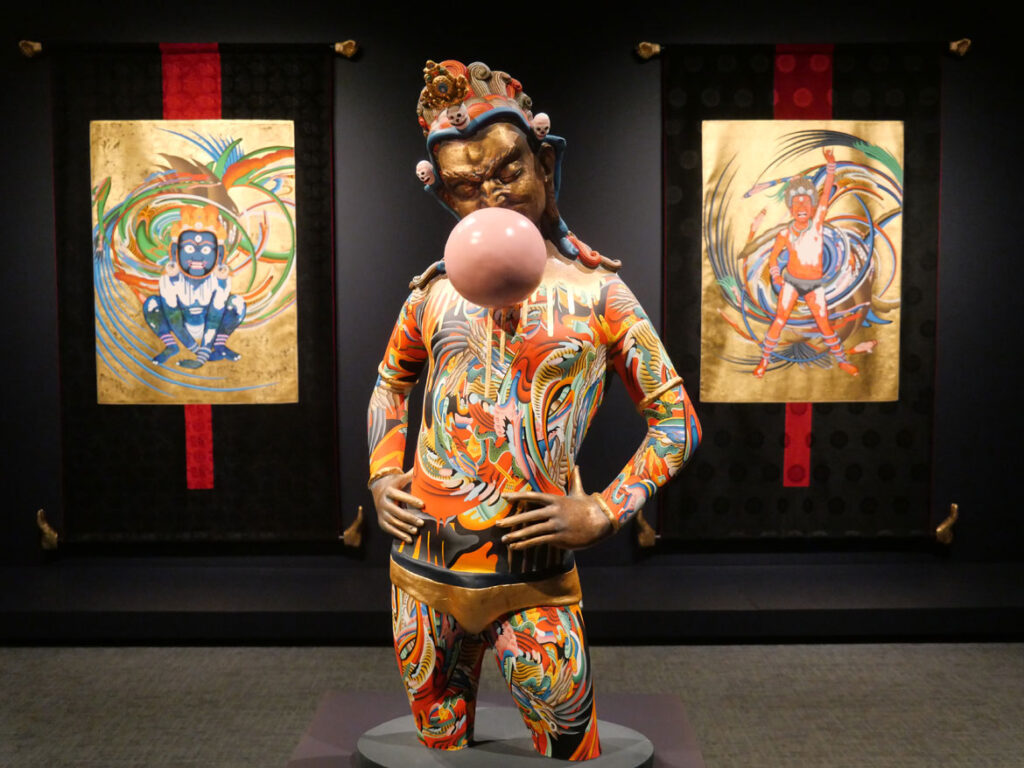
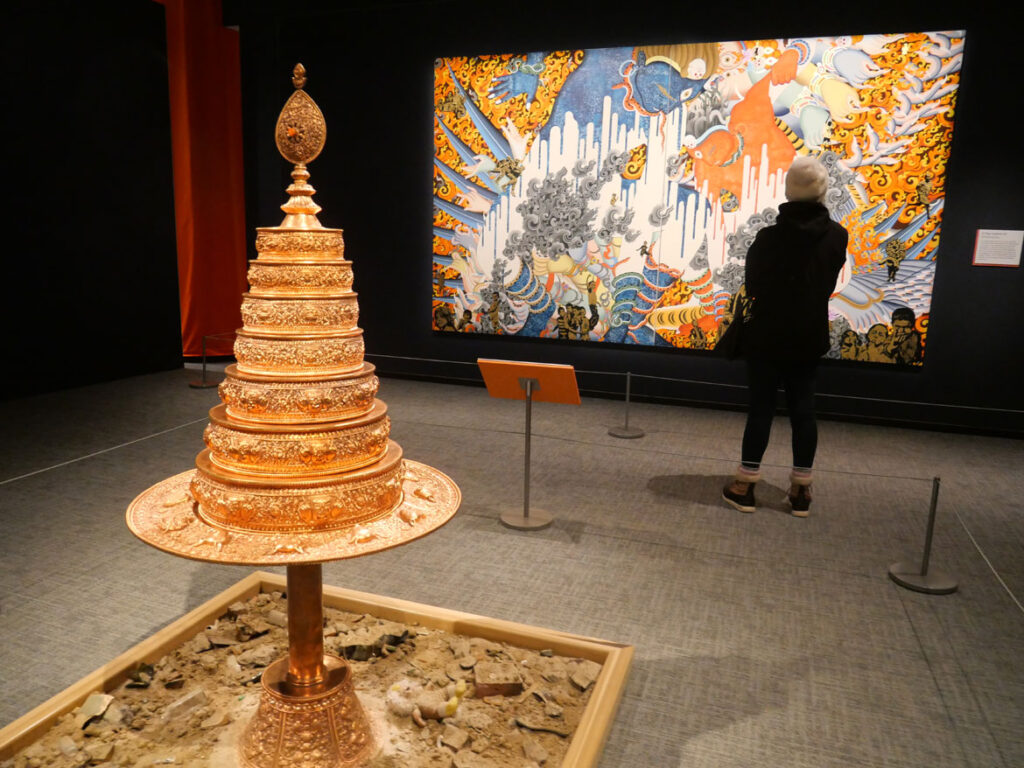
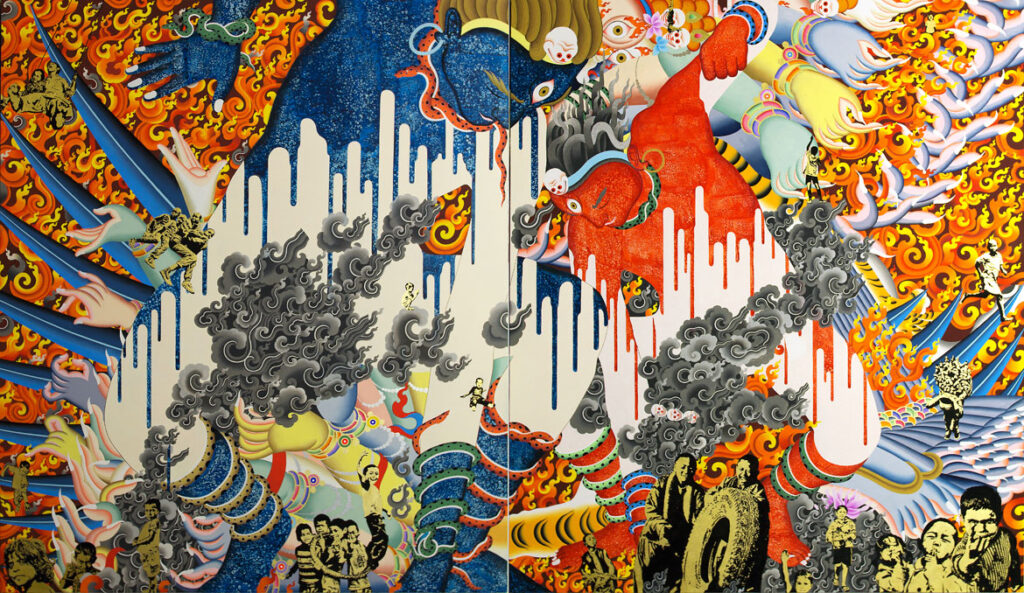
Two imposing Spirits descend into a chaotic, battle-like scene. Pigment drips across their forms and draws attention to the frenzy of color and activity that surrounds them—whirling flames, smoke, limbs, and wings. Small scenes with children fill the foreground. Some play joyfully while others work or wear military dress. Sherpa was contemplating the turmoil and global upheaval that we are leaving our children. There is a battle that they, along with these Spirits, will have to face to survive the world they inherit from us.
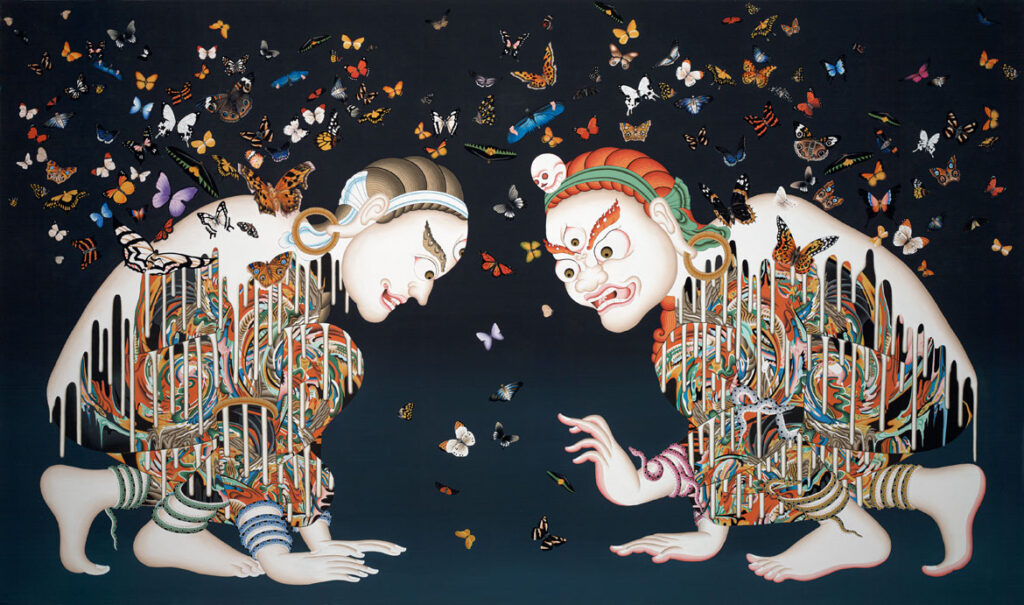
Two crouching Spirits focus on the enchanting insects swarming around them. The dizzying colors and patterns revealed by the pigment dripping from the Spirits’ backs create a visual harmony with the butterflies, as if the winged creatures are outward expressions of the Spirits’ inner transformation. The object of their contemplation is change itself.
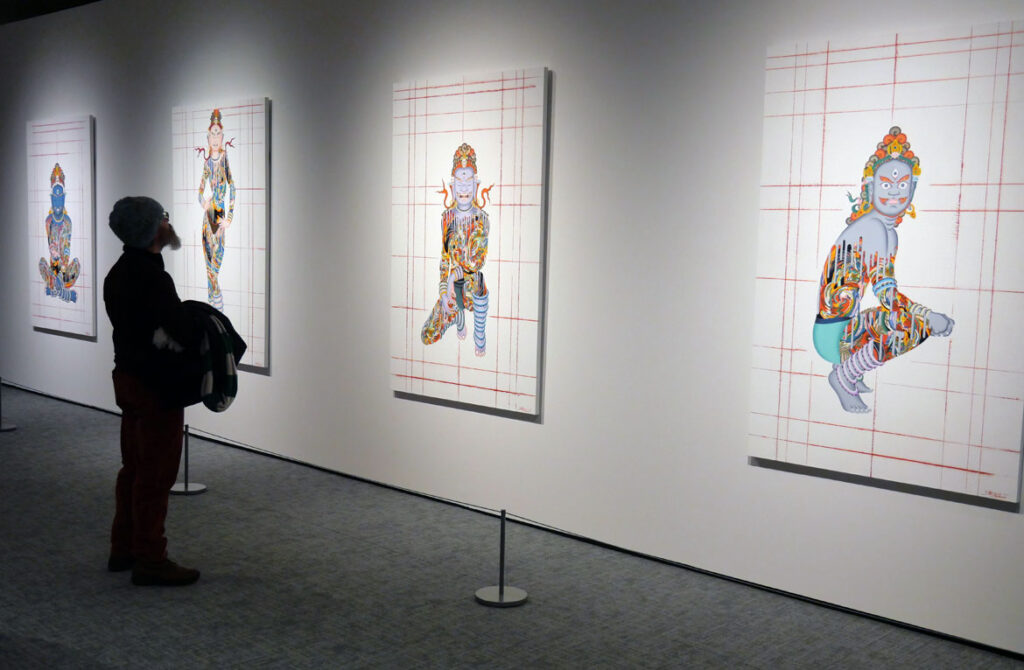


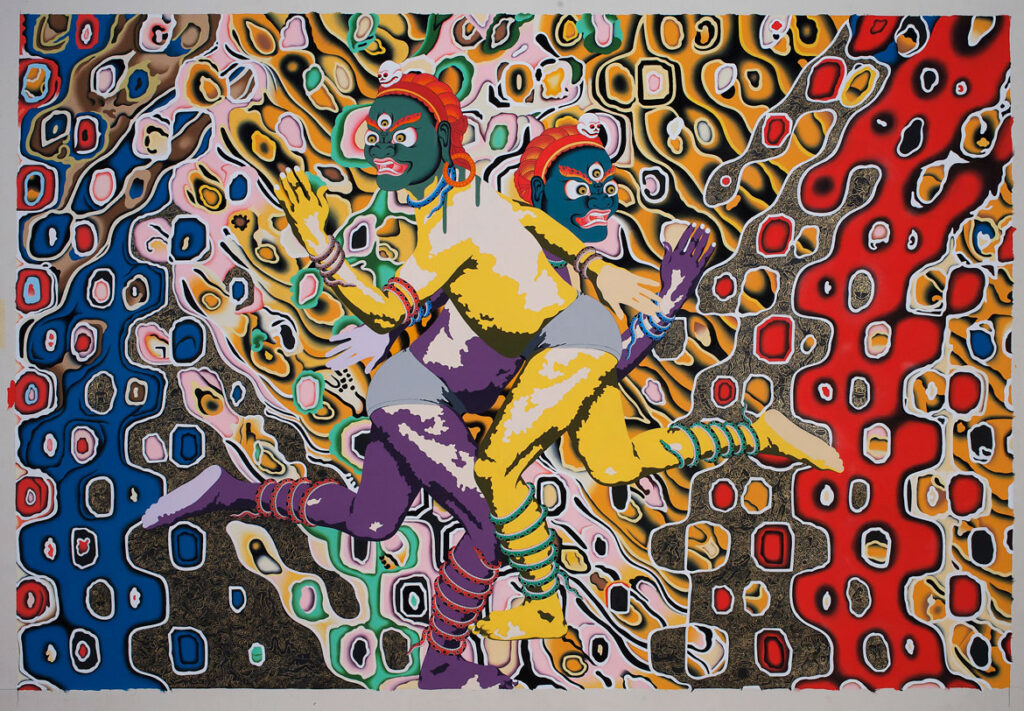
The kaleidoscopic background of this painting is inspired by the pixels that appear when zooming in on a digital image. Let your eye travel across the painting and you will see new forms emerge, including several borrowed from traditional Tibetan art. The two disoriented Spirits flee in opposite directions, as if running from or searching for something. Their mirrored pose may mean that they are, in fact, two aspects of the same Spirit.
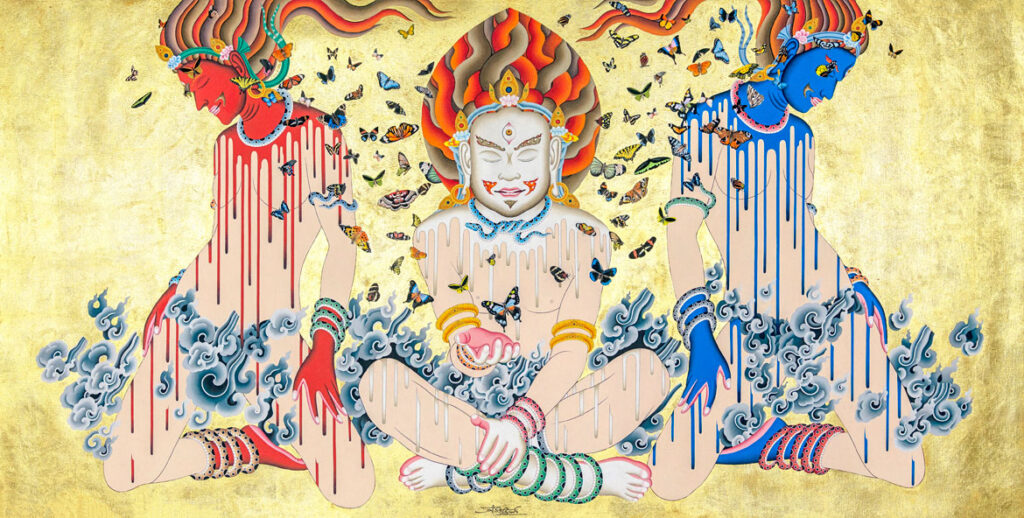

Mudras are symbolic hand gestures that are associated with different energies and properties. The four hands at the top of the composition show the wheel-turning dharmachakra mudras, with the right hands facing outward and left facing inward. The two middle rows show various humkara mudras, with wrists crossed inward over the chest, and the vajrahumkara mudra with the right hand holding a vajra, or scepter, over a ritual bell. On the middle right are two outward-facing hands, with little fingers linked in the wrathful spirit-subduing bhutadamara mudra. The bottom rows show the palms-folded and gem-holding anjali mudras of veneration, along with the interlinked fingers of the mandala-offering practice.
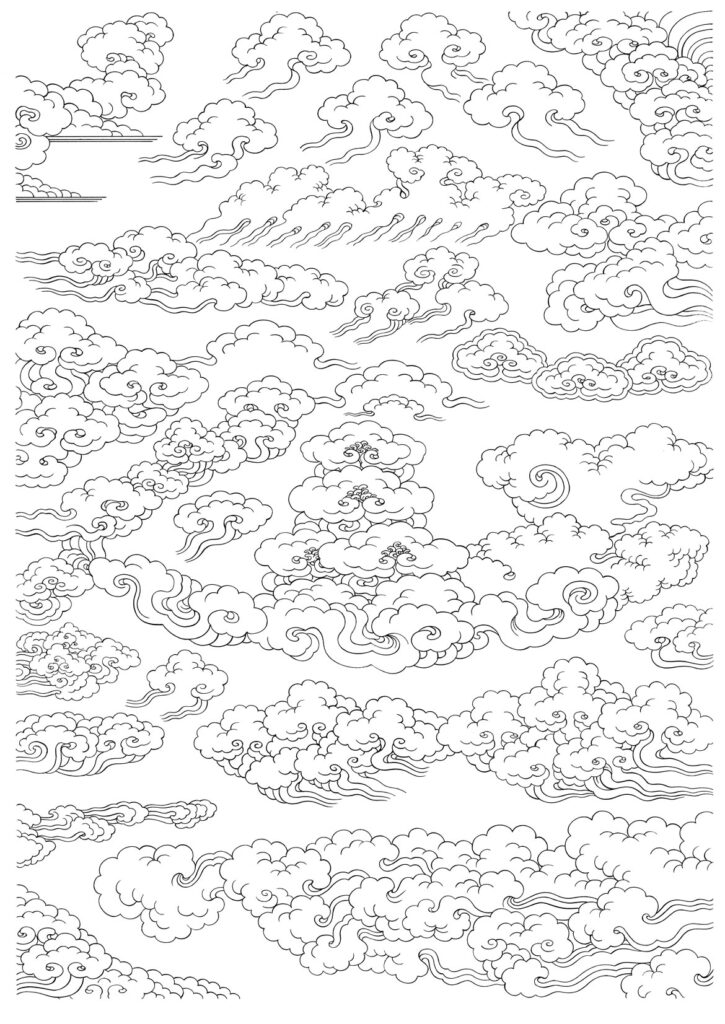
Billowing multicolored clouds appear in the blue skies of most peaceful deity compositions, often supporting the seemingly weightless thrones or symbolic vehicles of teachers, deities, and lineage gurus. Cumulus and stratocumulus clouds fill the middle and lower skies, with drifting mare’s tail clouds above. Storm clouds are often outlined with indigo, with stacked rain-bearing nimbus clouds appearing in the center of traditional compositions.
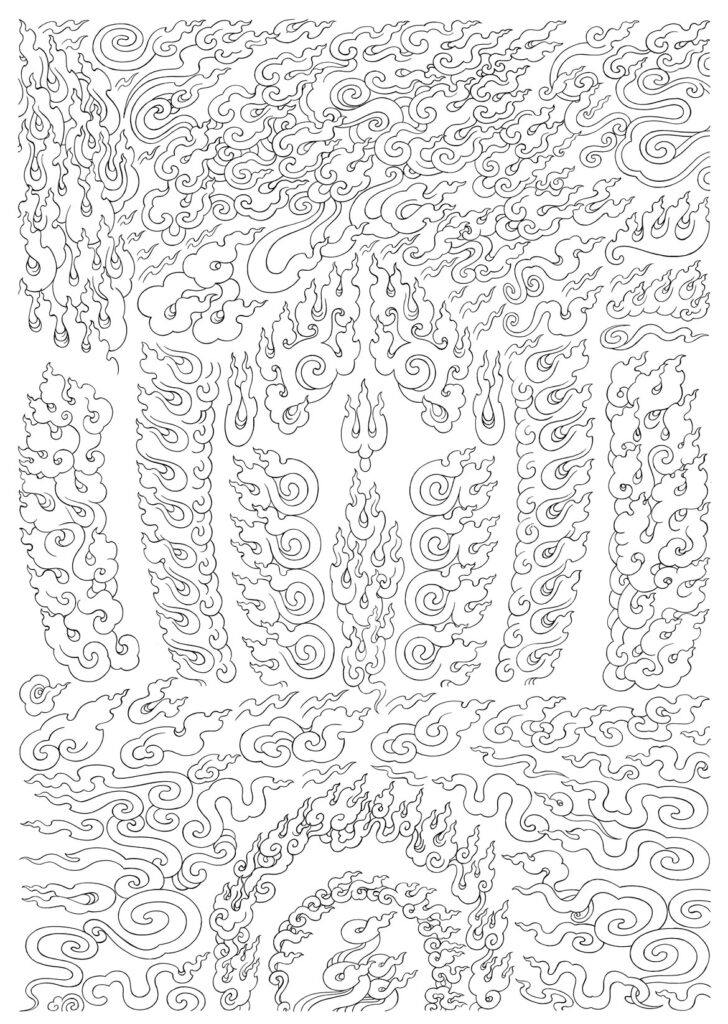
The billowing orange-red flames that encircle the auras and halos of wrathful deities in Tibetan art are known as blazing wisdom-awareness fire, which radiates inexhaustibly like the sun, or as Kalagni, the cosmic fire at the end of all time. Here, the central area depicts symmetrical flame banks surrounding the auras of certain semi-wrathful yidam or tutelary deities, with their flaming halos below.
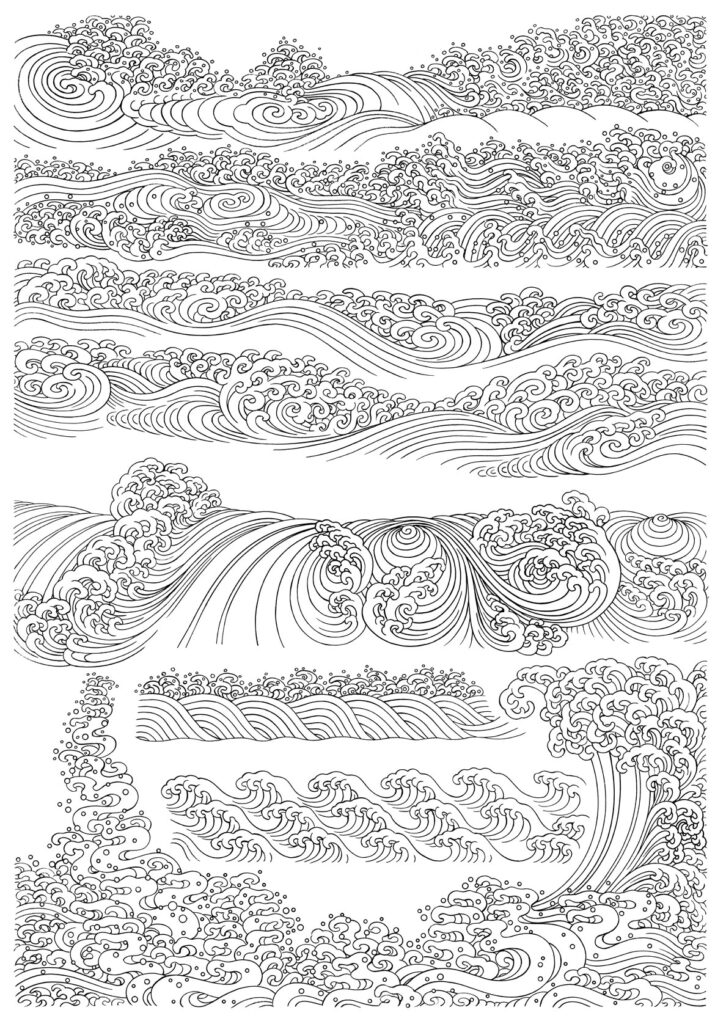
Like Japanese-born artist Katsushika Hokusai’s famous woodblock print Under the Wave off Kanagawa, similar renditions of turbulent water have been painted by Chinese-, Nepalese-, and Tibetan-born artists. Their dynamic brushwork can appear virtually photographic, as if captured in a single instant. These swirling eddies, whirlpools, and cascading waves form dynamic patterns as they fling out breaking waves and white water globules.
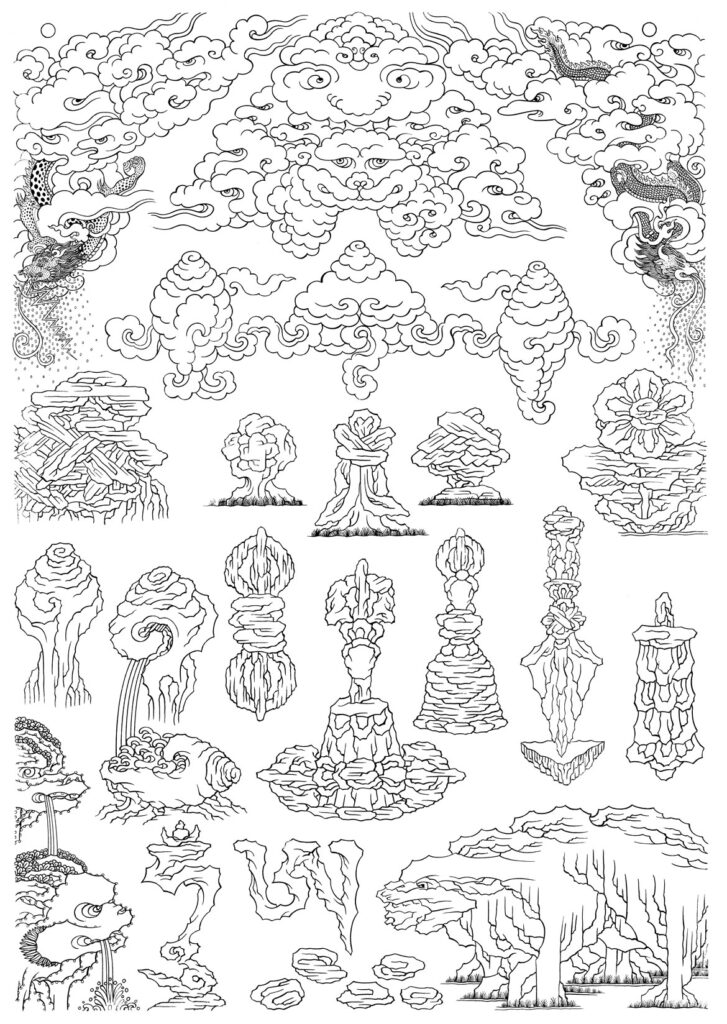
The heavens of Tibetan thangka paintings are traditionally populated by cloud-capped blue skies, with receding hills, foliage, streams, and rock formations making up the lower landscapes. These clouds sometimes assume the animated forms of mythical creatures or faces, while the rocks below may take the forms of auspicious symbols, such as knots, conch shells, sacred Tibetan syllables and ritual implements, or strange water-spouting and rock-devouring creatures.
